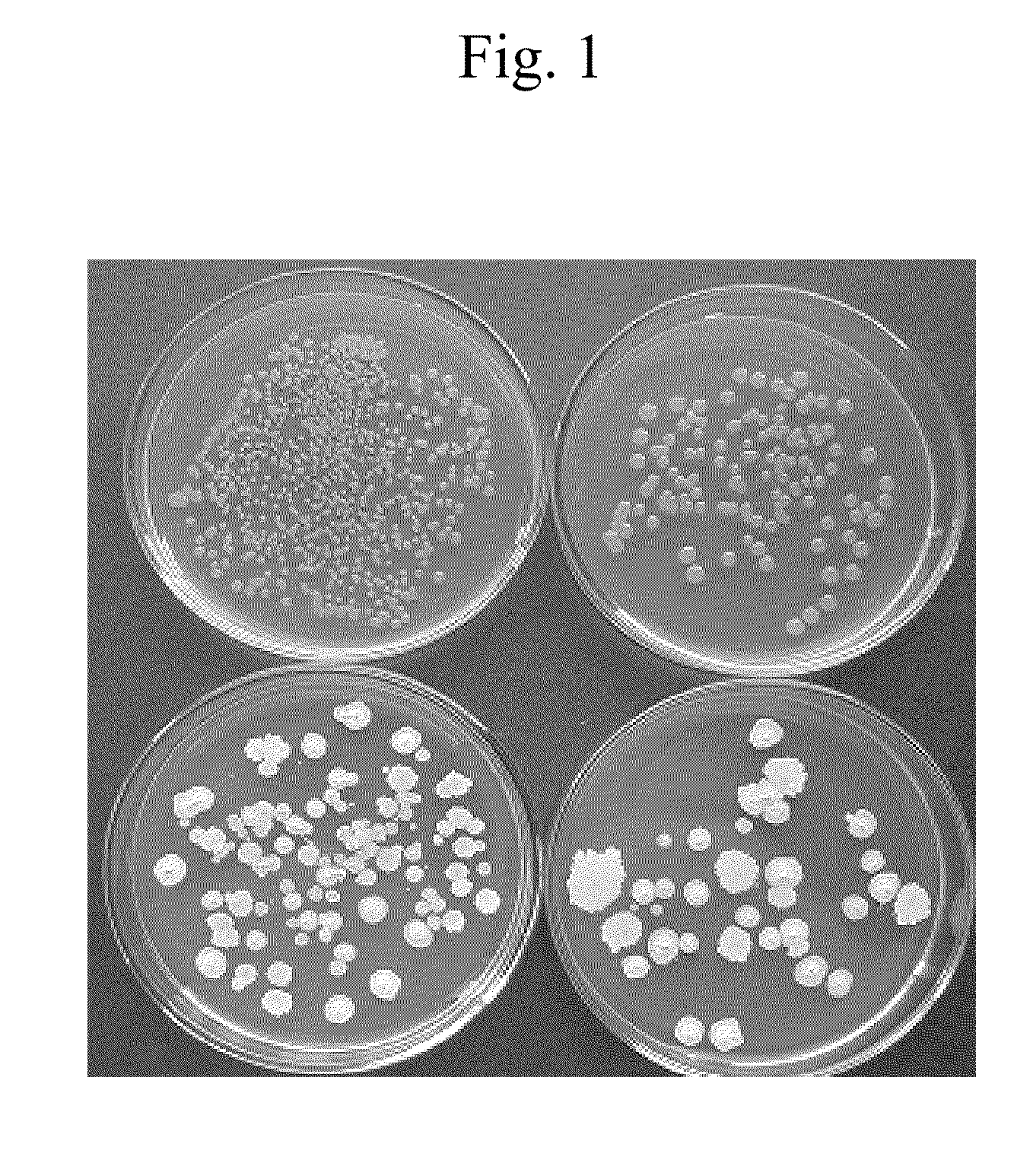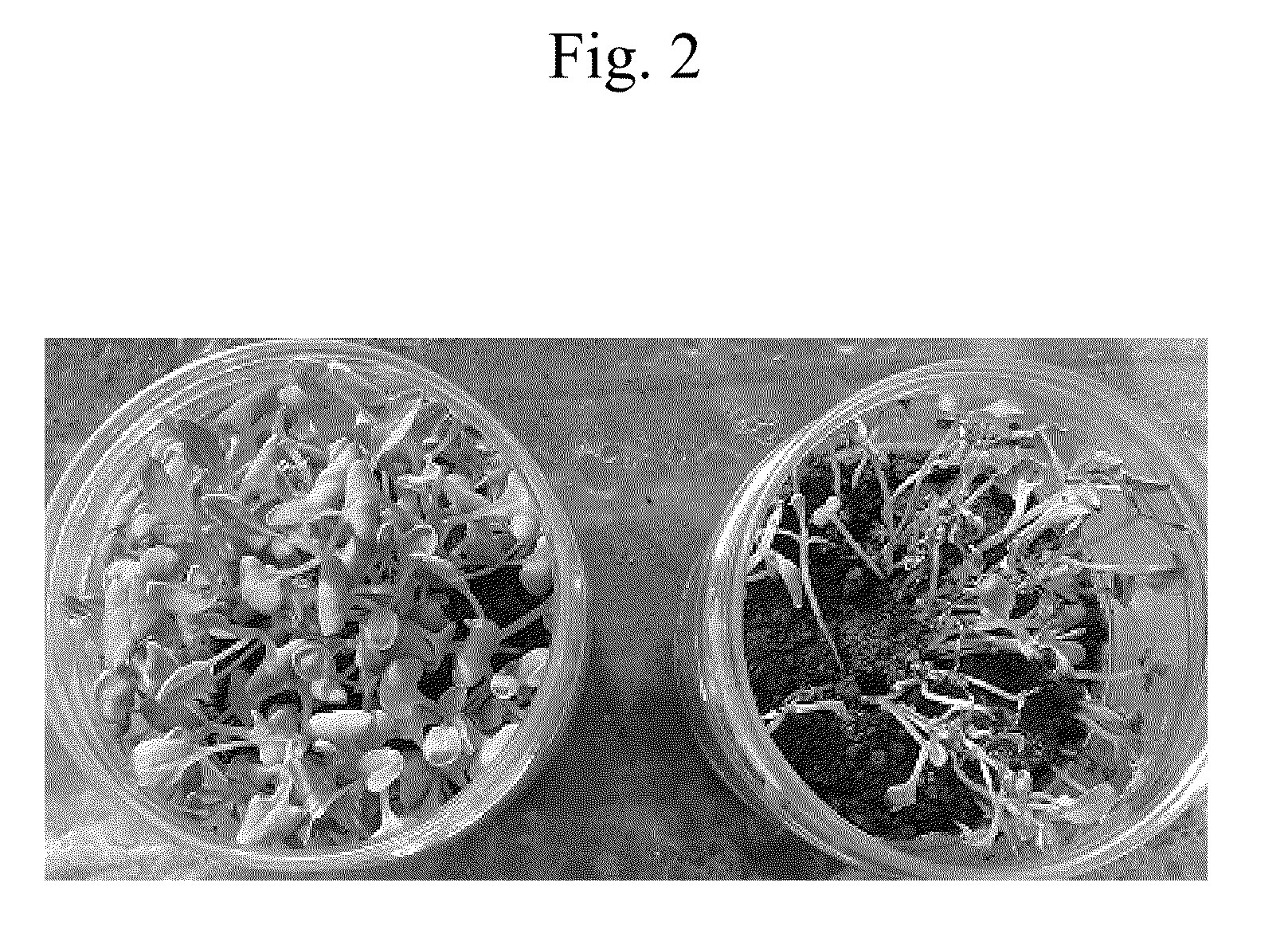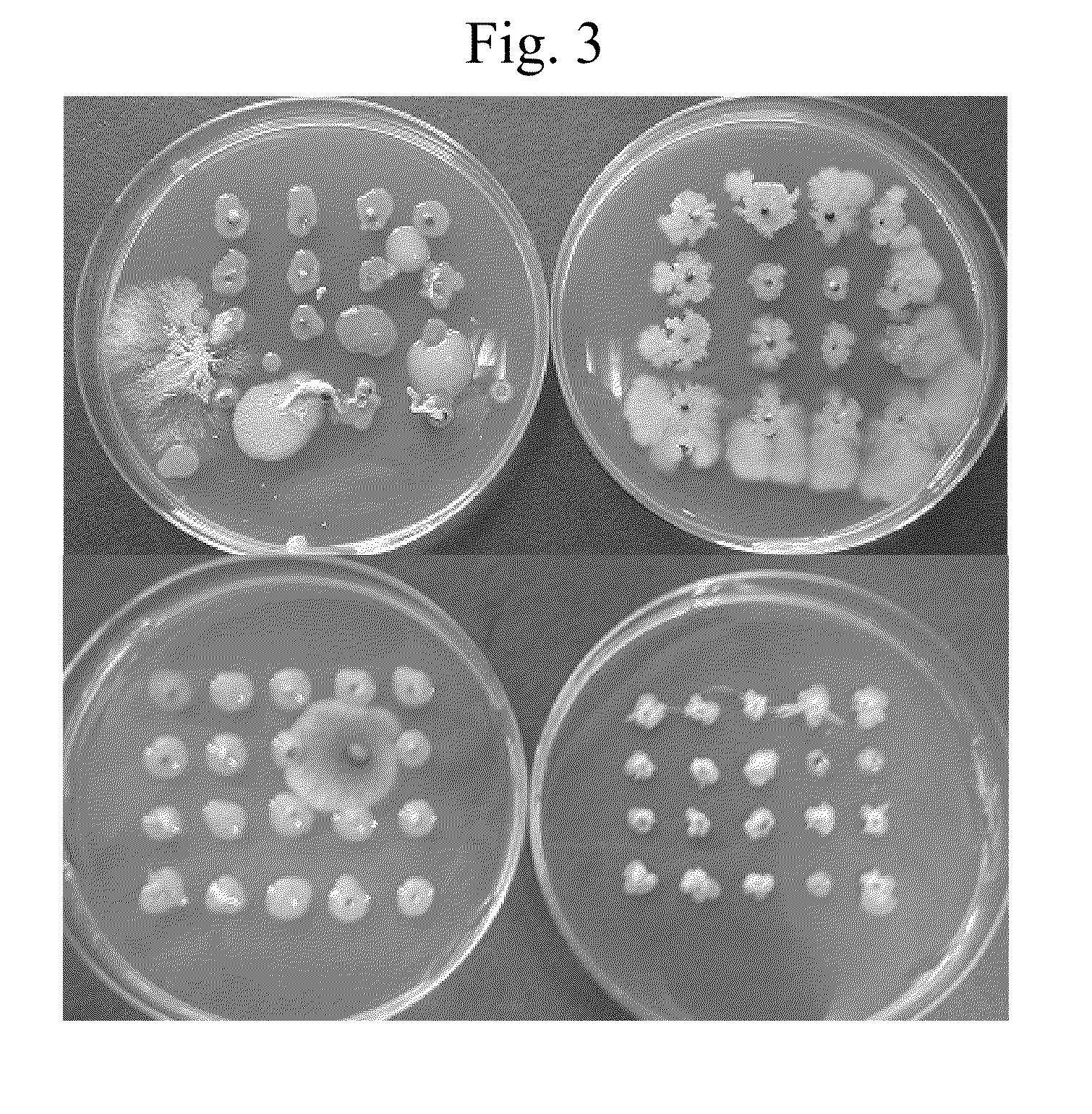Method and agent for controlling plant disease using bacteria of genus bacillus
a technology of genus bacillus and plant diseases, applied in the direction of bacteria-based processes, biocide, microorganisms, etc., can solve the problems of commercial farms being fatally affected, excessive use of pesticides, and heavy use of pesticides
- Summary
- Abstract
- Description
- Claims
- Application Information
AI Technical Summary
Benefits of technology
Problems solved by technology
Method used
Image
Examples
example 1
Determination of Timing of Maximal Growth of BAL Bacteria
[0079]The species related to Bacillus amyloliquefaciens (a platinum loopful) deposited as the DAIJU-SIID2550 strain at the International Patent Organism Depositary of the National Institute of Advanced Industrial Science and Technology (accession number: FERM BP-10114) (hereafter referred to as “BAL bacteria”) was suspended in 9 ml of sterilized water, 100 μl of the resulting suspension was added to 100 ml of AG medium (1% glucose (Wako Pure Chemical. Industries, Ltd.), 1% polypeptone (Nihon Pharmaceutical Co., Ltd.), 0.1% KH2PO4 (Wako Pure Chemical Industries, Ltd.), and 0.05% MgSO4.7H2O (Wako Pure Chemical Industries, Ltd.), pH 7.00, high-pressure sterilization for 15 minutes) in a 300-ml triangular flask or 100 ml of a potato decoction liquid medium with 2% sucrose. (The potato decoction was prepared by cutting 200 g of potato into about 1 cm cubes, adding approximately 1 liter of distilled water, and boiling the resultant ...
example 2
Inhibition of Xanthomonas campestris pv. campestris Proliferation via BAL Bacteria
[0080]A loopful of BAL bacteria was scraped off from YPA slant medium, and introduced into 100 ml of AG medium contained in a 300-ml triangular flask. The resultant was then subjected to shake culture using a reciprocal shaker with an amplitude of 10 cm at 120 rpm at 25° C. for 48 hours. A suspension of Xanthomonas campestris pv. campestris (100 μl) was introduced into this culture solution and shake culture was conducted for an additional 48 hours under the same conditions. The suspension of Xanthomonas campestris pv. campestris used herein was prepared by scraping a loopful of Xanthomonas campestris pv. campestris cultured in a potato decoction agar medium with 2% sucrose (hereafter abbreviated to “PSA”) slant medium and suspending the same in 9 ml of sterilized water. As a comparative experiment (a control group), 100 μl of the suspension of Xanthomonas campestris pv. campestris was introduced into ...
example 3
Preparation of Seeds Artificially Contaminated with Xanthomonas campestris pv. campestris
[0081]Bok choy seeds (34 g, variety: Fuyushoumi) were wrapped in gauze and soaked in 500 ml of a 150-fold diluted solution of Chemicron G (neutral calcium hypochlorite; available chlorine: 70%) for 10 minutes in order to disinfect the seeds. After the seeds were disinfected, they were washed under running water for 1 hour, and moisture was removed therefrom, followed by dehydration at 35° C. overnight. Separately, Xanthomonas campestris pv. campestris was previously cultured on 5 PSA plates for 3 days, and all the grown bacteria were scraped off and suspended in 100 ml of distilled water to prepare a 1×1012 cfu / ml Xanthomonas campestris pv. campestris solution. The disinfected seeds (17 g) were soaked in the Xanthomonas campestris pv. campestris solution for 20 minutes and then dehydrated at 35° C. overnight to prepare artificially contaminated seeds. As a result of inspection of the degree of ...
PUM
| Property | Measurement | Unit |
|---|---|---|
| temperature | aaaaa | aaaaa |
| temperature | aaaaa | aaaaa |
| temperature | aaaaa | aaaaa |
Abstract
Description
Claims
Application Information
 Login to View More
Login to View More - R&D
- Intellectual Property
- Life Sciences
- Materials
- Tech Scout
- Unparalleled Data Quality
- Higher Quality Content
- 60% Fewer Hallucinations
Browse by: Latest US Patents, China's latest patents, Technical Efficacy Thesaurus, Application Domain, Technology Topic, Popular Technical Reports.
© 2025 PatSnap. All rights reserved.Legal|Privacy policy|Modern Slavery Act Transparency Statement|Sitemap|About US| Contact US: help@patsnap.com



